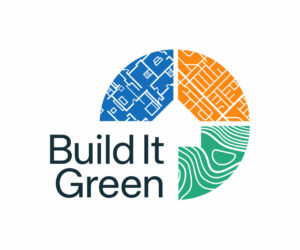 A new generation of policy alternatives, called Residential Energy Assessment and Disclosure (READ) ordinances, are addressing home energy efficiency in existing homes with good results.
A new generation of policy alternatives, called Residential Energy Assessment and Disclosure (READ) ordinances, are addressing home energy efficiency in existing homes with good results.
Below are two examples of cities that are using READ ordinances in very different ways. In California, City of Berkeley is targeting all building stock through energy audit services. In Colorado, City of Boulder has created a performance threshold for rental properties, which comprise an unusually high percentage of the city’s housing stock.
Berkeley’s Building Energy Saving Ordinance (BESO)
Adopted in 2015, BESO was developed to reduce the cost and consumption of energy and water in existing buildings within the city limits by mandating energy reports. BESO replaces a decades-old Residential Energy Conservation Ordinance that was triggered at time of sale. The ordinance applies to all existing residential and commercial buildings that fall under the city’s authority and requires all buildings with conditioned floor area to report energy and water consumption through a report or an asset rating. A key goal of the law is to drive cost-effective investment in energy and water efficiency.
By adopting Home Energy Score (HES) as the single family home requirement for BESO, Berkeley sought to leverage a broader workforce and shift the cost of compliance to the market. Berkeley sees HES as a compliance pathway to support comprehensive upgrades in existing homes. Additionally, HES scores can be included in the MLS listing at time of sale, which research suggests increases home values over time.
Implementation
The city chose to define the qualifications for professionals, who must show specific credentials, as well as a minimum delivery of yearly reports to maintain listing on an approved professionals list. Berkeley also defined the energy report and required elements, such as interviews with customers, visual inspections, energy and water existing conditions and opportunities, SB 407 water compliance, gas inspection, cost savings as percentage over baseline, solar evaluation, and building description.
There are exemptions for high performance buildings that permanently relieve the owner from the energy assessment requirements but are still subject to disclosure requirements and EnergyStar reporting. Examples are DOE Commercial Asset Rating score of 80, participation in low income weatherization programs, Certifications in Living Building Challenge, and GreenPoint Rated, LEED or HERS II scores of 90 or below. There are also hardship exemptions and deferral options.
A significant opportunity for improving energy efficiency may exist in the rental market, as rental housing is a segment of the residential sector that local government is engaged with through regulations and licensing requirements. Jurisdictions may choose to leverage this existing infrastructure to include energy assessment requirements for rental properties, as Boulder has done with its SmartRegs ordinance since 2010.
In Boulder, all rental properties must maintain a valid rental license. If a rental does not pass a SmartRegs inspection and achieve a compliance designation by 12/31/2018, the rental license will expire and the property owner will be unable to receive or renew a rental license until compliance with the minimum energy standards is met.
Because Boulder has a higher percentage of renters than other towns, an ordinance like this offers the greatest impact on the largest sector of housing. For example 51% of Boulder’s housing stock is renter-occupied and 70% was built prior to 1980.
Implementation
Boulder and SmartRegs created the EnergySmart Advisors service to provide free energy assessments and access to advisors, who assist in the process and help make decisions on cost-effective energy efficiency measures.
Property owners can comply with the SmartRegs energy efficiency requirements in one of two ways:
Since the two pathways are reasonably similar, the property owner can select the less expensive option of the prescriptive and still expect to get similar results. By recommending the most cost-effective measures with proven energy savings, the program aims to ensure that any rent increase that may be passed on to recoup owner investments in efficiency is balanced by utility cost savings to the tenant.
SmartRegs also provided the opportunity to collect pre- and post-retrofit bills and energy efficiency to help improve the accuracy of predictive models. With increase in rental occupants based on Harvard’s JCHS forecasts and National Multi Housing Council, ordinances like Boulder’s can result in increased efficiency and comfort for millions of renters.
As of September 2015, more than 11,000 licensed rental units have been evaluated, of which 8,500 are compliant with the required energy efficiency standard.
Would these examples work in your jurisdiction? Build It Green (BIG) is working in partnership with the PG&E Codes and Standards Team to help local government meet emissions reduction goals and implement home energy efficiency measures while also increasing occupant comfort and indoor air quality, lowering utility bills, increasing property value, and creating green jobs for your residents.
To find out how we can help your city or county advance your climate goals, contact Amy Dryden, Senior Technical Manager at Build It Green.


Alex Coba
Communication Associate
As a proud California native from Stockton, Alex brings a wealth of experience and a versatile skill set. He has a solid communication background with a Bachelor of Arts in Journalism and Public Relations from California State University, Chico. Alex is adept at strategic communications and media relations, with experience gathering and sharing stories from his local communities that uplift the unique spirit and values of those places. He is excited to join Build It Green, where he can apply his talents to further BIG’s mission to help communities across California thrive